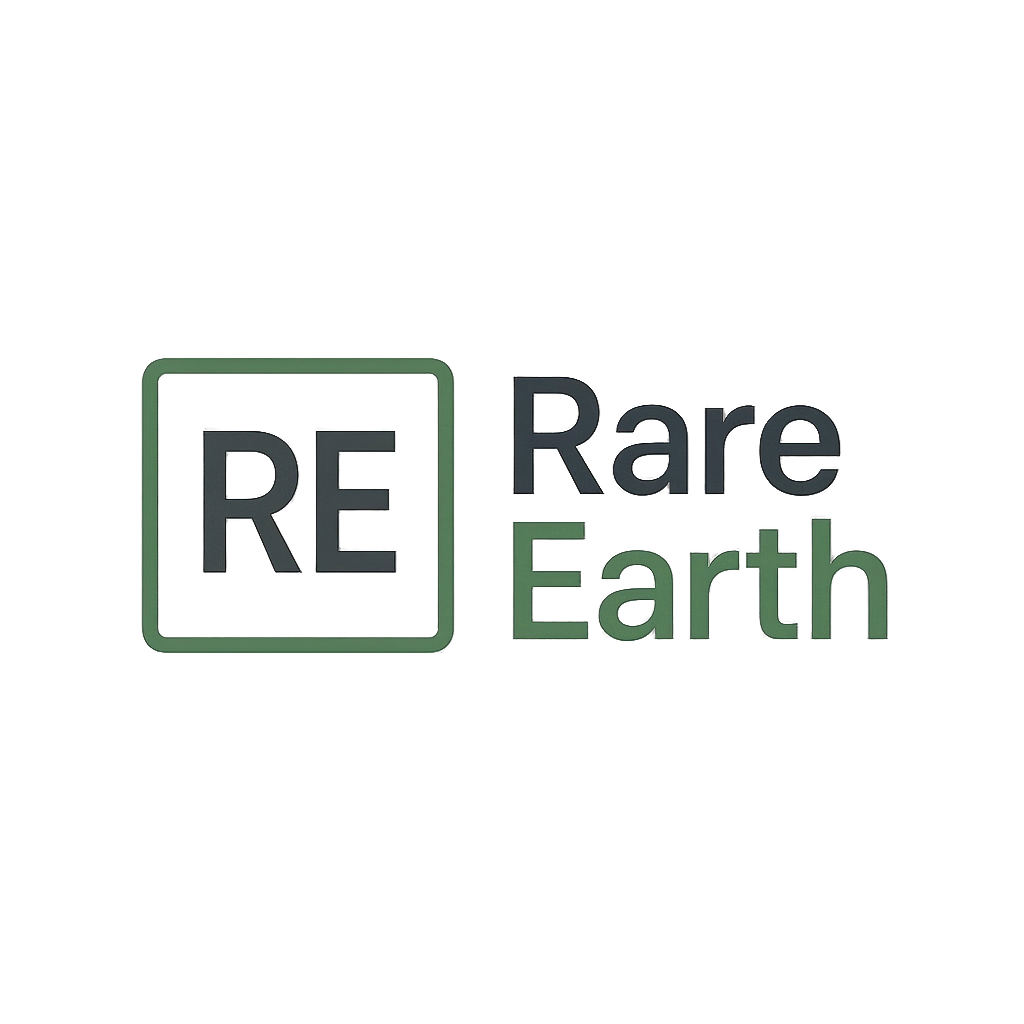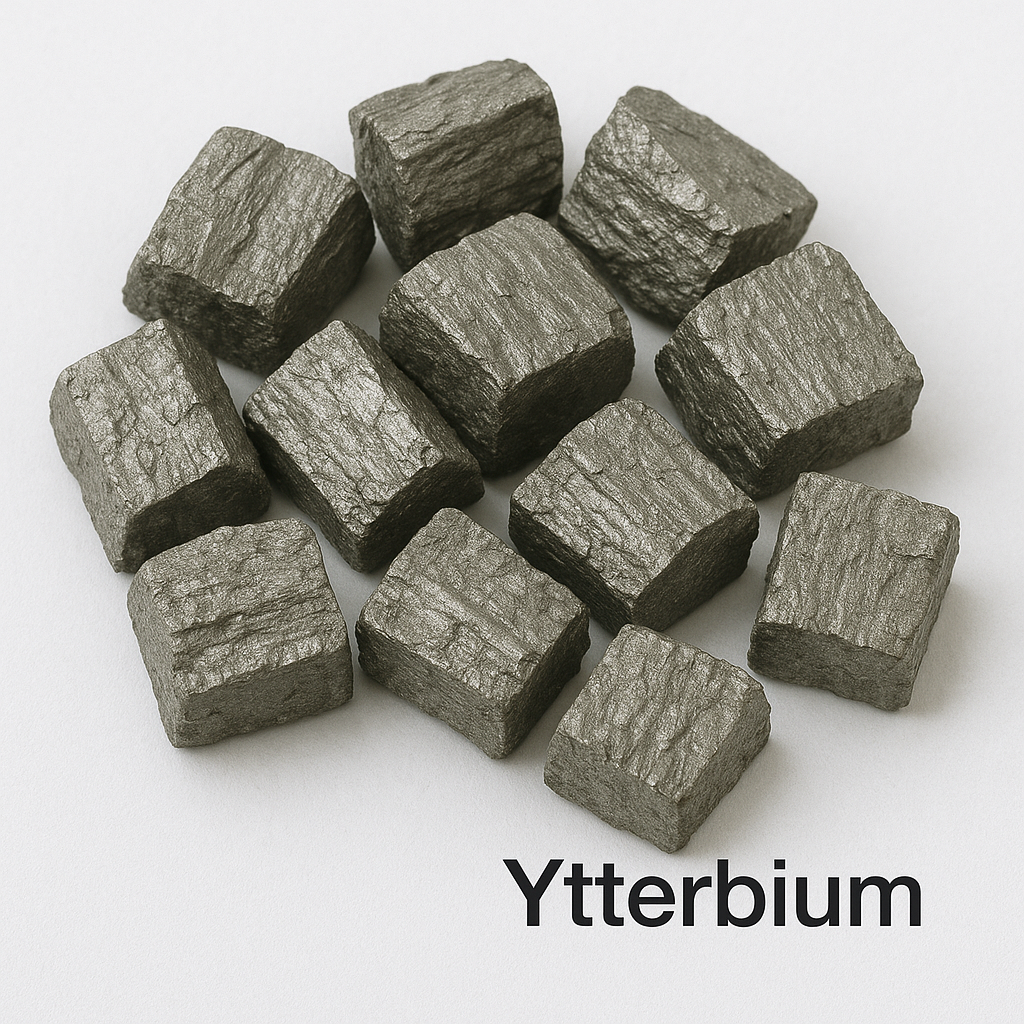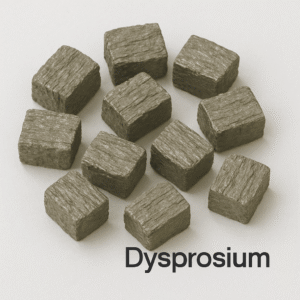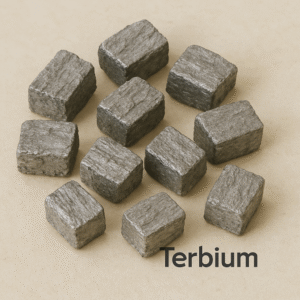Your cart is currently empty!
Ytterbium (Yb)
Basic Information Element Name: Ytterbium Symbol: Yb Atomic Number: 70 Atomic Weight: 173.05 Element Category: Lanthanide (Rare Earth Element) Standard State: Solid Appearance: Silvery-white, soft, and lustrous metal Chemical and Physical Properties Density: 6.90 g/cm³ Melting Point: 824 °C (1,515 °F) Boiling Point: 1,196 °C (2,185 °F) Electronegativity (Pauling scale): 1.1 Oxidation States: +2, +3 Magnetism: Diamagnetic (unusual for […]
Description
Basic Information
-
Element Name: Ytterbium
-
Symbol: Yb
-
Atomic Number: 70
-
Atomic Weight: 173.05
-
Element Category: Lanthanide (Rare Earth Element)
-
Standard State: Solid
-
Appearance: Silvery-white, soft, and lustrous metal
Chemical and Physical Properties
-
Density: 6.90 g/cm³
-
Melting Point: 824 °C (1,515 °F)
-
Boiling Point: 1,196 °C (2,185 °F)
-
Electronegativity (Pauling scale): 1.1
-
Oxidation States: +2, +3
-
Magnetism: Diamagnetic (unusual for lanthanides)
Reactivity and Storage
Ytterbium is relatively reactive. It tarnishes slowly in air and reacts with water and acids. The metal must be stored in sealed containers or under inert gas to prevent surface oxidation. It is one of the more volatile and soft lanthanides, and is easily cut with a knife.
Occurrence and Extraction
Ytterbium is typically found in rare earth minerals such as monazite, xenotime, and gadolinite, and is often co-extracted with other heavy lanthanides. It is separated by solvent extraction or ion-exchange processes. Though not abundant, it is commercially available due to improved separation technology.
Isotopes
Naturally occurring ytterbium consists of seven stable isotopes, with Yb-174 being the most abundant. Several radioactive isotopes are used in nuclear and scientific research.
Key Applications
1. Ytterbium-Doped Lasers
-
Yb³⁺ ions are widely used in solid-state laser systems (e.g., Yb:YAG, Yb:KGW)
-
Advantages include:
-
High energy efficiency
-
Narrow emission bandwidth (~1030 nm)
-
Low thermal load during operation
-
-
Applied in:
-
Laser cutting, welding, engraving
-
Medical devices
-
Optical communications and LIDAR
-
2. Atomic Clocks and Quantum Research
-
Yb atoms are used in optical lattice clocks, one of the most accurate timekeeping systems known
-
Ytterbium isotopes are being explored for use in quantum computing and qubit systems
-
Critical in ultra-cold atom research and quantum simulation experiments
3. Alloy Additive
-
Ytterbium is added to stainless steel and other alloys to improve grain refinement and strength
-
Enhances mechanical performance and corrosion resistance in high-demand environments
4. Thermoelectric Materials
-
Certain ytterbium-based intermetallic compounds (e.g., YbAl₃, YbCu₂Si₂) show potential for converting heat into electricity
-
Used in thermoelectric generators for waste heat recovery and aerospace systems
5. Nuclear Applications
-
Some Yb isotopes possess significant neutron absorption cross-sections
-
Investigated for use in neutron shielding and reactor control materials
6. Phosphors and Biomedical Imaging
-
Yb³⁺-doped materials are used in upconversion phosphors for infrared and biomedical applications
-
Found in anti-counterfeit inks, deep tissue imaging agents, and optical sensors
Interesting Facts
-
Named after Ytterby, a village in Sweden where many rare earth elements were discovered
-
Discovered in 1878 by Swiss chemist Jean Charles Galissard de Marignac
-
Though part of the lanthanide series, its electronic behavior shares features with alkaline earth metals
-
Plays a growing role in quantum technologies, energy systems, and advanced laser devices
Additional information
| Weight | 1 lbs |
|---|---|
| Dimensions | 1 × 1 × 1 in |
| Weight | 100G |
-
Cerium (Ce)
$257.00 -
Dysprosium (Dy)
$670.00 -
Erbium (Er)
$174.00 -
Europium (Eu)
$1,550.00 -
Gadolinium (Gd)
$106.00






